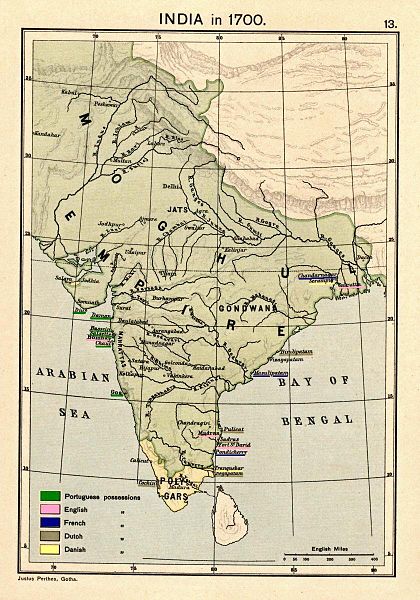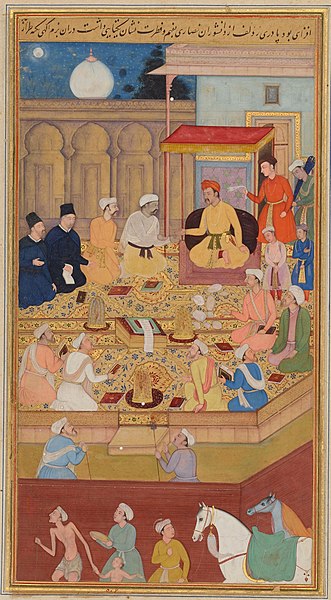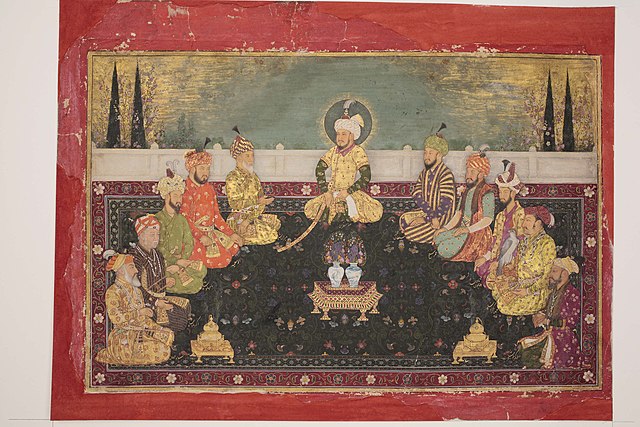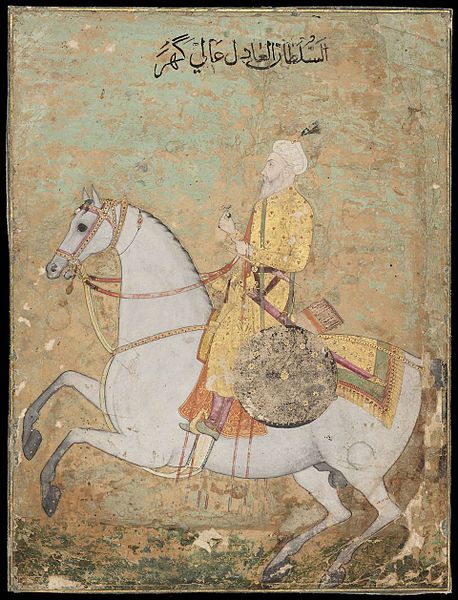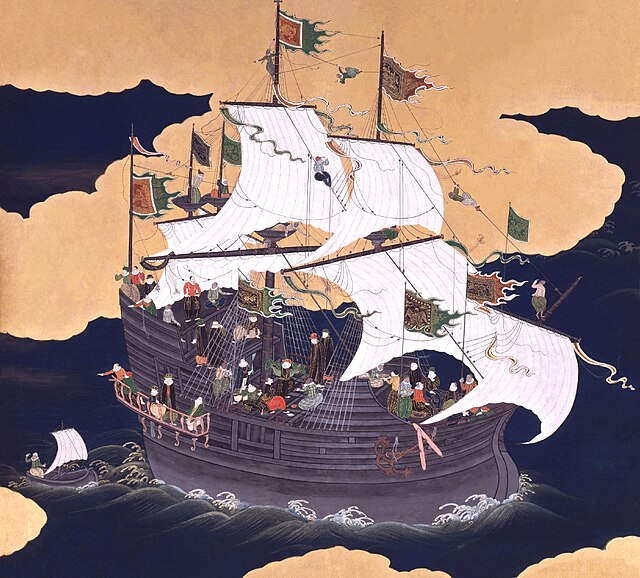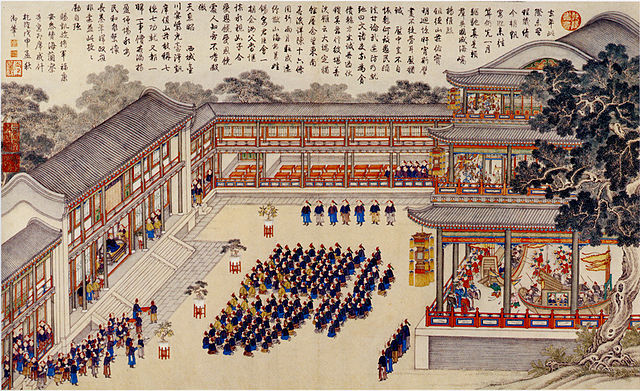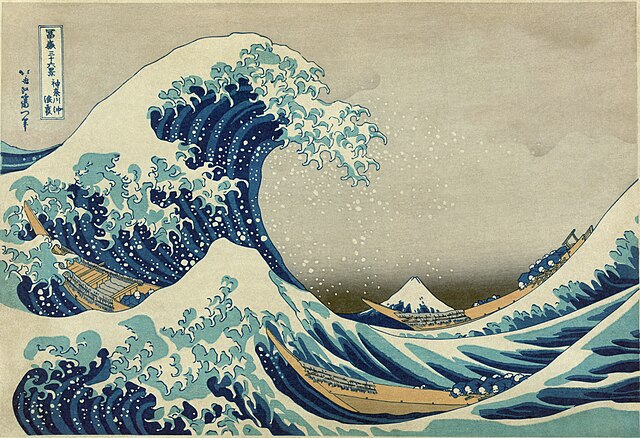The Mughal Empire was an early modern Indo-Muslim empire in South Asia. At its peak, the empire stretched from the outer fringes of the Indus River Basin in the west, northern Afghanistan in the northwest, and Kashmir in the north, to the highlands of present-day Assam and Bangladesh in the east, and the uplands of the Deccan Plateau in South India.
The empire at its greatest extent in c. 1700 under Aurangzeb
Akbar holds a religious assembly of different faiths in the Ibadat Khana in Fatehpur Sikri.
Group portrait of Mughal rulers, from Babur to Aurangzeb, with the Mughal ancestor Timur seated in the middle. On the left: Shah Jahan, Akbar and Babur, with Abu Sa'id of Samarkand and Timur's son, Miran Shah. On the right: Aurangzeb, Jahangir and Humayun, and two of Timur's other offspring Umar Shaykh and Muhammad Sultan. Created c. 1707–12
Shah Alam II on horseback
The early modern period is a historical period that is part of the modern period based primarily on the history of Europe and the broader concept of modernity. There is no exact date that marks the beginning or end of the period and its timeline may vary depending on the area of history being studied. In general, the early modern period is considered to have lasted from the 16th to the 19th centuries. In a European context, it is defined as the period following the Middle Ages and preceding the advent of modernity, sometimes defined as the "late modern period". In the context of global history, the early modern period is often used even in contexts where there is no equivalent "medieval" period.
A Japanese depiction of a Portuguese trading carrack. Advances in shipbuilding technology during the Late Middle Ages would pave the way for the global European presence characteristic of the early modern period.
Cishou Temple Pagoda, built in 1576: the Chinese believed that building pagodas on certain sites according to geomantic principles brought about auspicious events; merchant-funding for such projects was needed by the late Ming period.
Painting depicting the Qing Chinese celebrating a victory over the Kingdom of Tungning in Taiwan. This work was a collaboration between Chinese and European painters.
The Great Wave off Kanagawa, c. 1830 by Hokusai, an example of art flourishing in the Edo Period

